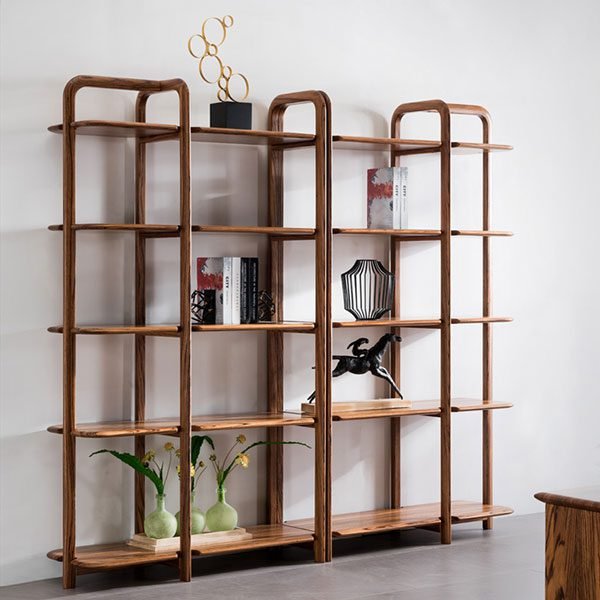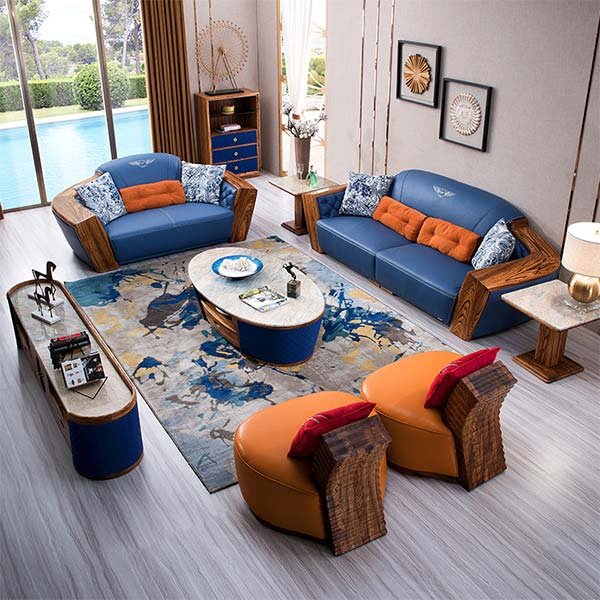Sustainable Materials in Modern Furniture Designs
In recent years, there has been a growing emphasis on sustainability and eco-friendly practices in various industries, including the furniture industry. As we look ahead to 2024, it is clear that sustainable materials will continue to play a significant role in modern furniture designs. This article will explore some of the innovative trends in sustainable materials that we can expect to see in the coming years.
One of the most exciting developments in sustainable materials for modern furniture is the use of recycled and upcycled materials. Designers are finding creative ways to repurpose materials that would otherwise end up in landfills. For example, old wooden pallets can be transformed into unique and stylish coffee tables or bookshelves. Similarly, discarded plastic bottles can be melted down and molded into sleek and modern chairs. These recycled and upcycled materials not only reduce waste but also add a touch of uniqueness and character to furniture pieces.
Another trend that is gaining momentum is the use of sustainable wood alternatives. Traditional hardwoods, such as oak and mahogany, are often sourced from old-growth forests, leading to deforestation and habitat destruction. In response to these concerns, designers are turning to alternative materials that have a lower environmental impact. Bamboo, for instance, is a fast-growing grass that can be harvested sustainably and used to create beautiful and durable furniture. Additionally, reclaimed wood from old buildings or furniture can be repurposed into new pieces, giving them a second life and reducing the demand for new wood.
In addition to recycled and alternative materials, modern furniture designers are also exploring the use of biodegradable materials. These materials are designed to break down naturally over time, reducing their impact on the environment. For example, biodegradable plastics made from plant-based sources, such as corn or sugarcane, can be used to create chairs or tables that are not only stylish but also eco-friendly. Similarly, natural fibers like hemp or jute can be woven into upholstery fabrics that are biodegradable and free from harmful chemicals.
Furthermore, sustainable materials are not limited to the construction of furniture but also extend to the finishing touches. Traditional varnishes and paints often contain harmful chemicals that can be released into the air over time. To address this issue, designers are turning to natural and non-toxic finishes. For instance, plant-based oils, such as linseed oil or tung oil, can be used to protect and enhance the natural beauty of wood without releasing harmful fumes. Water-based paints and dyes are also becoming popular alternatives to traditional solvent-based options, reducing the environmental impact of furniture production.
In conclusion, sustainable materials are set to be a major trend in modern furniture designs in 2024. From recycled and upcycled materials to sustainable wood alternatives and biodegradable options, designers are finding innovative ways to create stylish and eco-friendly furniture pieces. Additionally, the use of natural and non-toxic finishes further enhances the sustainability of these designs. As consumers become more conscious of their environmental footprint, the demand for sustainable furniture will continue to grow, driving further innovation in the industry. By embracing these trends, we can create a more sustainable and beautiful future for our homes and the planet.
Integration of Technology in Furniture for Smart Homes
In today’s fast-paced world, technology has become an integral part of our lives. From smartphones to smart homes, we are constantly surrounded by innovative gadgets that make our lives easier and more convenient. This integration of technology has also made its way into the world of furniture design, with modern trends focusing on creating furniture that seamlessly integrates with our smart homes.
One of the most exciting trends in modern furniture design is the incorporation of smart features. Imagine a sofa that can adjust its firmness based on your preferences or a coffee table that can charge your devices wirelessly. These are just a few examples of how technology is being integrated into furniture to enhance our living spaces.
One of the key aspects of this trend is the use of sensors and connectivity. Furniture designers are now incorporating sensors into their creations, allowing them to gather data and adjust settings accordingly. For example, a smart bed can monitor your sleep patterns and adjust the temperature or lighting in your bedroom to create the perfect sleeping environment. This level of customization and personalization is truly revolutionary and is changing the way we interact with our furniture.
Another aspect of this trend is the use of voice control and artificial intelligence. Imagine being able to control your entire living room with just your voice. From adjusting the lighting to playing your favorite music, smart furniture is making this a reality. With the help of artificial intelligence, furniture can learn your preferences and adapt to your needs over time. This level of automation not only adds convenience but also creates a more personalized and comfortable living space.
In addition to the integration of technology, modern furniture design is also focusing on sustainability and eco-friendliness. With the increasing concern for the environment, furniture designers are now using sustainable materials and incorporating energy-efficient features into their creations. For example, a smart sofa may be made from recycled materials and have built-in sensors that can detect when you are not using it, automatically adjusting its power consumption to save energy.
Furthermore, modern furniture is also becoming more modular and adaptable. With the rise of smaller living spaces, furniture designers are creating pieces that can be easily rearranged and transformed to fit different needs. For example, a smart dining table can be extended or folded to accommodate more or fewer guests, making it perfect for small apartments or homes with limited space. This adaptability not only maximizes the functionality of furniture but also allows for more efficient use of space.
In conclusion, the integration of technology in furniture design is revolutionizing our living spaces. From smart features to sustainability, modern furniture trends are focused on creating a more convenient, personalized, and eco-friendly living environment. With the use of sensors, connectivity, voice control, and artificial intelligence, furniture is becoming smarter and more intuitive. Additionally, the focus on sustainability and adaptability ensures that furniture can meet the needs of modern living, even in smaller spaces. As we move into 2024, we can expect to see even more innovative and exciting developments in the world of modern furniture design.
Minimalist and Space-Saving Furniture Solutions
In recent years, the world of furniture design has seen a shift towards minimalist and space-saving solutions. As urban living spaces become smaller and more compact, the need for furniture that maximizes functionality while minimizing space has become increasingly important. In this article, we will explore some of the innovative modern furniture trends of 2024 that cater to this growing demand.
One of the key trends in minimalist and space-saving furniture is the use of modular designs. Modular furniture allows users to customize and adapt their living spaces according to their needs. These versatile pieces can be rearranged and reconfigured to fit different room layouts, making them ideal for small apartments or multi-purpose rooms. For example, a modular sofa can be transformed into a bed or a sectional depending on the occasion, providing flexibility and convenience.
Another popular trend in minimalist furniture is the use of multi-functional pieces. These furniture items serve more than one purpose, saving both space and money. For instance, a coffee table with built-in storage compartments can double as a bookshelf or a display unit. Similarly, a dining table with foldable sides can be expanded to accommodate guests or folded down to create more floor space when not in use. These multi-functional pieces are not only practical but also aesthetically pleasing, adding a touch of modernity to any living space.
In addition to modular and multi-functional designs, innovative storage solutions have also gained popularity in the world of minimalist furniture. With limited space, it is crucial to maximize storage options without compromising on style. Furniture designers have come up with creative ways to integrate storage into their designs, such as hidden compartments, built-in shelves, and under-bed storage. These clever storage solutions help keep living spaces organized and clutter-free, making them ideal for those who value both form and function.
Furthermore, the use of lightweight and compact materials has become a prominent feature in modern minimalist furniture. With advancements in technology, furniture designers are able to create sturdy and durable pieces using materials that are lightweight and easy to move around. This is particularly beneficial for those living in small apartments or constantly on the move. Lightweight furniture not only saves space but also makes it easier to rearrange and reconfigure the living space according to changing needs.
Lastly, sustainability has become a significant consideration in modern furniture design. As people become more conscious of their environmental impact, furniture designers are incorporating eco-friendly materials and manufacturing processes into their creations. From using recycled materials to implementing energy-efficient production methods, sustainable furniture options are becoming increasingly popular. These eco-friendly choices not only contribute to a greener planet but also add a sense of responsibility and mindfulness to the overall design aesthetic.
In conclusion, the minimalist and space-saving furniture trends of 2024 are driven by the need to optimize functionality in small living spaces. Modular designs, multi-functional pieces, innovative storage solutions, lightweight materials, and sustainability are all key features of these modern furniture trends. As urban living spaces continue to shrink, these innovative furniture solutions provide practical and stylish options for individuals looking to make the most of their limited space.
Conclusion
In conclusion, the innovative modern furniture trends of 2024 are expected to focus on sustainability, multifunctionality, and technology integration. Furniture designs will prioritize eco-friendly materials and manufacturing processes, offering consumers more sustainable options. Additionally, multifunctional furniture pieces that maximize space and provide versatile functionality will gain popularity. The integration of technology into furniture, such as smart features and wireless charging capabilities, will also be a prominent trend in 2024. Overall, these trends reflect the growing demand for furniture that is both stylish and practical in the modern world.



